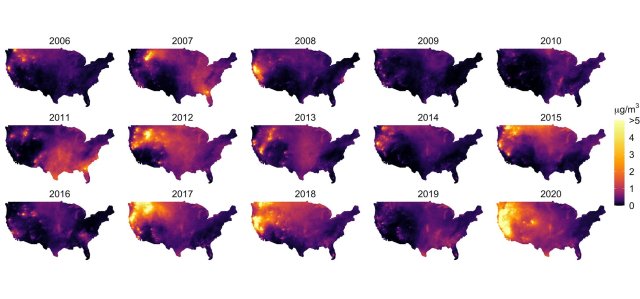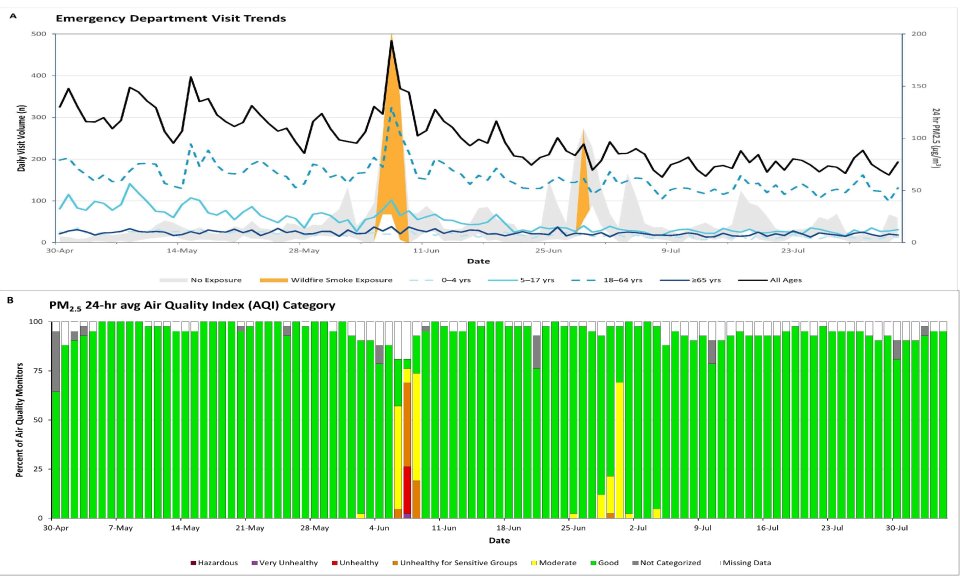Increasing Impacts of Wildfire Smoke
There has been an increase in the occurrence of large and catastrophic wildfires, both within the U.S. and abroad. Consequently, smoke has often blanketed large portions of the U.S. from wildfires occurring in the U.S. and, at times, from wildfires occurring in Canada and Mexico. These wildfires resulted in substantial increases in PM2.5 concentrations across the nation. An examination of the year-to-year impacts of smoke across the U.S. shows an increase in the concentration of smoke, as well as an expansion in the parts of the country that experience smoke (Figure 6).

Source: Childs et al. (2022)
National air quality impacts attributed to wildfire smoke translate into substantial national public health impacts. Recent studies estimate that thousands of yearly respiratory- and cardiovascular-related Emergency Department (ED) visits, hospital admissions and deaths are due to wildfire smoke exposure across the U.S. (Fann et al. 2018; O’Dell et al. 2022).
In addition to estimating yearly public health impacts, studies have also highlighted the daily impacts of smoke on public health. For example, McArdle et al. (2023) analyzed syndromic surveillance data and found that smoke from the 2023 Canadian wildfires that impacted the eastern U.S. led to an observable increase in the daily number of asthma ED visits (Figure 7).

Figure 7. Asthma emergency department visits and PM2.5 AQI category during the 2023 Canadian wildfire smoke event in Health and Human Services Region 2 (New York, New Jersey, Puerto Rico, U.S. Virgin Islands). Source: Adapted from McArdle et al. (2023)
Most studies have focused on examining the air quality and public health impacts of wildfire smoke. However, there is a larger effort to increase prescribed fires as one of the main strategies to reduce the risk of large catastrophic wildfire. Consequently, some recent studies examined the air quality and public health impacts of prescribed fires. Such analyses showed that, when comparing wildfire to prescribed fire, the smoke emitted from and the estimated public health impacts of prescribed fires are generally smaller than those from wildfires (e.g., U.S. EPA 2021). However, regardless of the type of fire the smoke originates from, it can still be detrimental to health. As the scale of prescribed fire increases, smoke from these fires could become a larger public health concern than previously considered, especially in geographic areas where increases in prescribed fires are planned.
